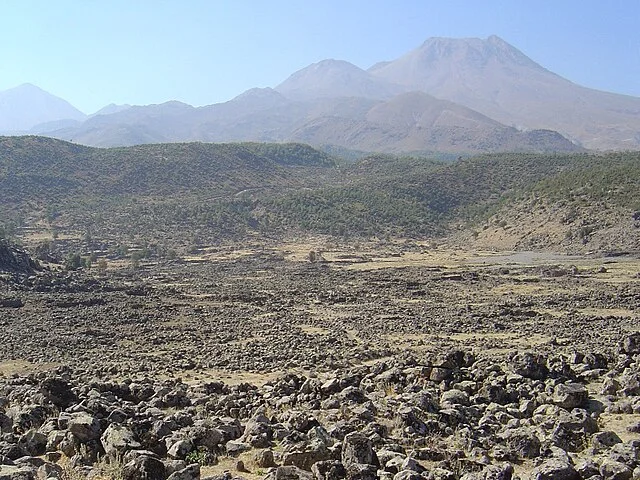Mokissos, also known as Mokisos or Mopsuestia in later periods, is an ancient city located in Cappadocia, central Turkey. The city holds historical and archaeological significance due to its role in late antiquity and the Byzantine period. Its ruins are situated on the Karadağ Plateau, near the modern town of Helvadere, in Aksaray Province.
Get your dose of History via Email
Historical Background
The city of Mokissos dates back to the Roman period, likely founded in the 3rd century AD. During the Byzantine era, it grew into a significant settlement, especially under Emperor Justinian I (r. AD 527–565). He extensively rebuilt and fortified the city, integrating it into the Byzantine defensive network in Anatolia.
Mokissos served as a regional administrative center and ecclesiastical hub. It became part of the Cappadocian bishopric and played a role in the spread of Christianity. By the 7th century AD, it faced challenges due to Arab-Byzantine conflicts.
Architectural Features
Mokissos features remnants of late Roman and Byzantine architecture. The city includes:
- Churches: The ruins of several churches reveal its religious importance. Their designs reflect early Christian architectural styles.
- Fortifications: Defensive walls and towers, built during Justinian’s reign, protected the city from invasions.
- Residential and Public Buildings: The ruins of homes, public spaces, and water systems provide insight into urban life during its peak.
Archaeological surveys have also uncovered inscriptions and fragments of mosaics, suggesting a thriving cultural and religious community.
Decline and Abandonment
Mokissos declined during the 8th and 9th centuries AD, primarily due to repeated Arab invasions and shifting trade routes. By the 11th century AD, the city was largely abandoned. Some evidence indicates that local communities continued to use the area sporadically.
Archaeological Significance
The site offers valuable information about Byzantine urban planning and life in the Cappadocian region. Mokissos’s relatively remote location has preserved its ruins, allowing archaeologists to study its history without significant modern interference.
Systematic archaeological investigations have been limited, though surveys and small-scale excavations have documented key structures. The city’s historical layers remain largely unexplored, presenting opportunities for future research.
Conclusion
Mokissos is an important archaeological and historical site in central Turkey. Its remains provide insights into the Byzantine Empire’s influence in Cappadocia. Ongoing preservation and research efforts could uncover more about this city’s role in regional history.
Source:

